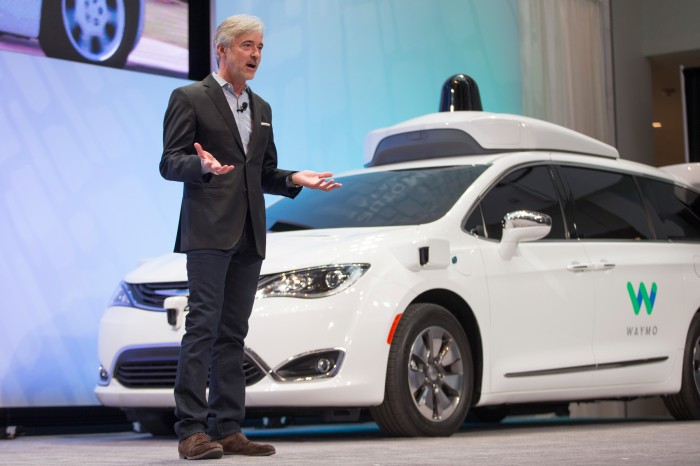Why Some Autonomous Cars Are Going to Avoid the Internet
Self-driving cars are essentially large computers on wheels. No surprise, then, that some of them will be kept offline in the name of security.
John Krafcik, the CEO of Alphabet’s self-driving car company, Waymo, explained to the Financial Times (paywall) that its vehicles only occasionally connect to the Internet. “Our cars communicate with the outside world only when they need to, so there isn’t a continuous line that’s able to be hacked, going into the car,” he told the newspaper.
That policy shouldn’t come as a huge surprise. In 2015, security researchers demonstrated that they could remotely hack into the computer systems aboard a Jeep Cherokee and disable its brakes while a driver was at the wheel. Incidents like that no doubt serve to make drivers—and automakers—nervous about handing full control over to computerized vehicles if they're connected to the Internet.

Waymo is able to take its cars offline because its crucial systems are all stored on local computers aboard the car. And since those systems are performing the same job as a human driver—that is, taking in information about the roadway and making decisions about how to behave—there's no need for it to pull data down from the cloud at every turn.
Some manufacturers, like BMW and Audi, plan for their cars to communicate with each other and even talk to street furniture, such as traffic signals. That will enable them to, say, merge lanes intelligently, better predict when to brake, or approach junctions at an appropriate speed. It will also, however, require an always-on data connection.
There are, of course, already connected cars on the road. Tesla’s vehicles, for example, are not only connected to the Internet, but also have some self-driving capability. As our own Will Knight has explained, Elon Musk’s automaker increases the security of its vehicles by using separate computer systems to control different aspects of the car.
But if we’ve learned anything from the rise of connected devices, it’s that hackers are a resourceful bunch who can invariably find a flaw. These days, the world’s largest computer security conference, Defcon, features a whole section dedicated to car hacking. Separating computer systems is a start, but a committed hacker could still find a vulnerability.
For now, then, the prospect of autonomous cars being hacked remains an open problem. Waymo’s solution, of simply keeping the car offline as much of the time as possible, works for now. But to reap the benefits of connecting cars, it can’t remain the case. That will mean facing up to hackers and finding other ways of improving security, rather than hiding offline.
(Read more: Financial Times, “Carmakers Accelerate Security Efforts after Hacking Stunts,” “Chatty Cars Are Getting Out on the Road,” “Audi’s New Technology Is the Beginning of the End of Traffic Lights”)
Keep Reading
Most Popular
How scientists traced a mysterious covid case back to six toilets
When wastewater surveillance turns into a hunt for a single infected individual, the ethics get tricky.
The problem with plug-in hybrids? Their drivers.
Plug-in hybrids are often sold as a transition to EVs, but new data from Europe shows we’re still underestimating the emissions they produce.
What’s next for generative video
OpenAI's Sora has raised the bar for AI moviemaking. Here are four things to bear in mind as we wrap our heads around what's coming.
Stay connected
Get the latest updates from
MIT Technology Review
Discover special offers, top stories, upcoming events, and more.